- Joined
- Dec 4, 2016
- Messages
- 197
- Points
- 43
I've got a couple of relatively high power Nd:YAG lasers, so I had a regular wish to frequency double one of them.
My expectations were like: "OK, I'll take a 125W pumping chamber, insert it between two HR mirrors, place a frequency doubling crystal between the chamber and one of the mirrors, blast 50 amperes in the lamp and get 50W of green" LOL. All my expectations epically crashed and shattered about the cruel reality.
All my expectations epically crashed and shattered about the cruel reality.
So, I had bought a couple of SHG crystals including a NOS 6*6*15 mm LiNbO3 crystal which was considered for 532 nm generation and a shard of KTP with the size of 3*3*5 mm from a DPSS laser. I also have a BaNaNb crystal in its fixture with a heating element. So, I started my experiments. At first, I put together a YAG laser with the 20W pumping chamber and tried to focus the beam into the KTP with a short focus lens. The result was quite disappointing -- there was very little amount of green, possibly 5 mW. Out of 20W! I tried to heat the krystal to 50-60 degrees C, but it made everything even worse.
My second experiment was placing the LiNbO3 crystal in the laser cavity. Both mirrors were HR for 1064 nm. This was a little bit better, at optimal temperature the green beam was brighter, but nothing really interesting. Next, I tried to pump the BaNaNb crystal with the same pumping chamber inside the laser cavity -- the result was bad too, even at optimal crystal temperature. With no hope I replaced the K301A chamber with the 125W K301V one. The BaNaNb crytal totally refused to work with it -- it suppressed lasing at all. The LiNbO3 one gave the best result of about 50 mW of green at its peak. Just like the TYLaser303 chinese pointer(((((
Where could I have mistaken? I've seen the Laserscope KTP532 machine that can shoot out 40W of green. It has a Z-fold cavity, and the laser from which I took the BaNaNb crystal had a Z cavity too. At the other hand, DPSS lasers very often work with a linear cavity with all elements placed very tightly inside.
Are L- or Z-folded cavities really that neccesary? Why does it not work in a linear cavity with flat HR mirrors?
Now I'm looking for a driver for an acoustooptic Q-switch, this is the only thing I didn't try.
I'll post some photos a bit later.
My expectations were like: "OK, I'll take a 125W pumping chamber, insert it between two HR mirrors, place a frequency doubling crystal between the chamber and one of the mirrors, blast 50 amperes in the lamp and get 50W of green" LOL.
So, I had bought a couple of SHG crystals including a NOS 6*6*15 mm LiNbO3 crystal which was considered for 532 nm generation and a shard of KTP with the size of 3*3*5 mm from a DPSS laser. I also have a BaNaNb crystal in its fixture with a heating element. So, I started my experiments. At first, I put together a YAG laser with the 20W pumping chamber and tried to focus the beam into the KTP with a short focus lens. The result was quite disappointing -- there was very little amount of green, possibly 5 mW. Out of 20W! I tried to heat the krystal to 50-60 degrees C, but it made everything even worse.
My second experiment was placing the LiNbO3 crystal in the laser cavity. Both mirrors were HR for 1064 nm. This was a little bit better, at optimal temperature the green beam was brighter, but nothing really interesting. Next, I tried to pump the BaNaNb crystal with the same pumping chamber inside the laser cavity -- the result was bad too, even at optimal crystal temperature. With no hope I replaced the K301A chamber with the 125W K301V one. The BaNaNb crytal totally refused to work with it -- it suppressed lasing at all. The LiNbO3 one gave the best result of about 50 mW of green at its peak. Just like the TYLaser303 chinese pointer(((((
Where could I have mistaken? I've seen the Laserscope KTP532 machine that can shoot out 40W of green. It has a Z-fold cavity, and the laser from which I took the BaNaNb crystal had a Z cavity too. At the other hand, DPSS lasers very often work with a linear cavity with all elements placed very tightly inside.
Are L- or Z-folded cavities really that neccesary? Why does it not work in a linear cavity with flat HR mirrors?
Now I'm looking for a driver for an acoustooptic Q-switch, this is the only thing I didn't try.
I'll post some photos a bit later.
Last edited:




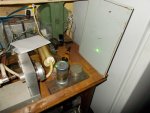
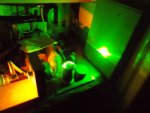
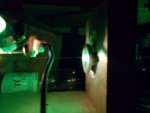
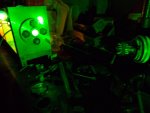
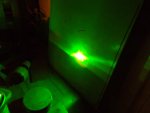
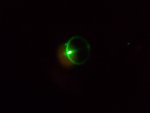
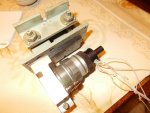
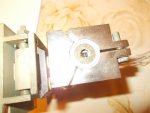

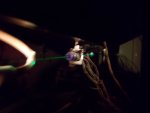
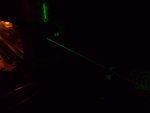
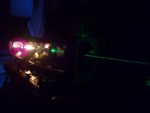

![DSCN0684.AVI_snapshot_00.45_[2015.08.01_17.17.09].jpg](/data/attachments/39/39340-b5386a2e04add8df8f90cae8100c41af.jpg?hash=tThqLgSt2N)
